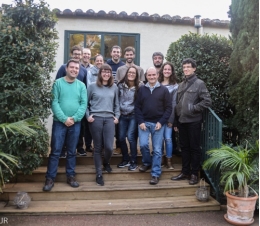07-02-2017
How did some plants become carnivorous?
International team identified the key genomic changes that allowed some plants to adopt a carnivorous diet, as seen in a study in which Julio Rozas, Pablo Librado and Alejandro Sánchez-Garcia, from the Faculty of Biology and the Biodiversity Research Institute of the University of Barcelona (IRBio) take part.
Adapting and surviving with a carnivorous diet in nutrient-poor soils is an evolutionary process that some evolutionary unrelated species have been going through, repeatedly and independently, from a same set of genes and proteins.
As part of the research, the experts of the UB and IRBio have remarkably contributed to the genomic analysis, integrating the uncertainty that exists on the species’ phylogenetic relations to infer which type of genes have preferentially duplicated or lost in the different plant species. This genomic analysis was carried out mainly with BadiRate, a bioinformatics software created by Pablo Librado and Julio Rozas (University of Barcelona) that proved to be essential to discover which kinds of genes, including digestive enzymes, recurrently accompanied the emergence of carnivorous diets in unrelated plant lineages.
Further information
